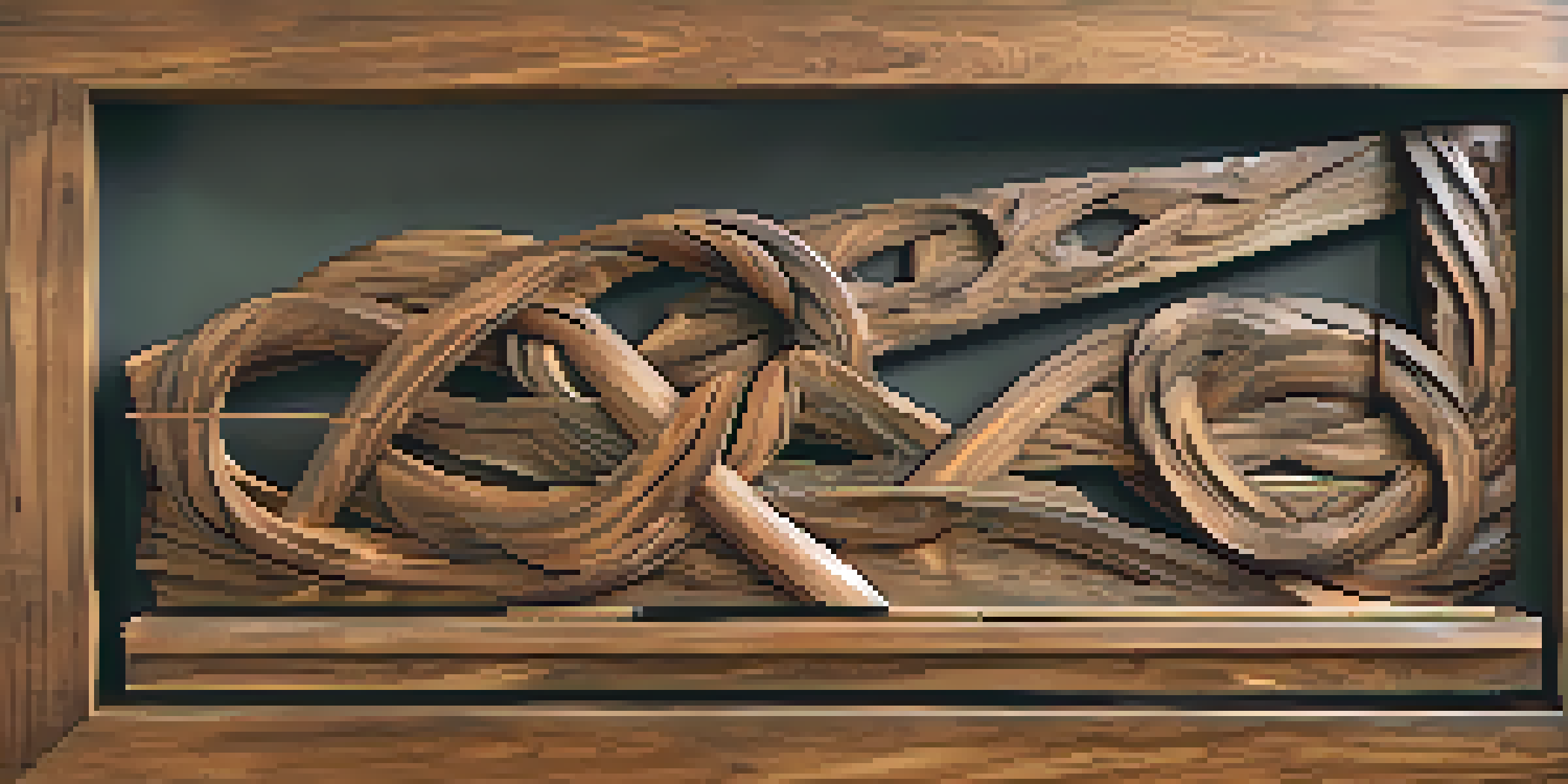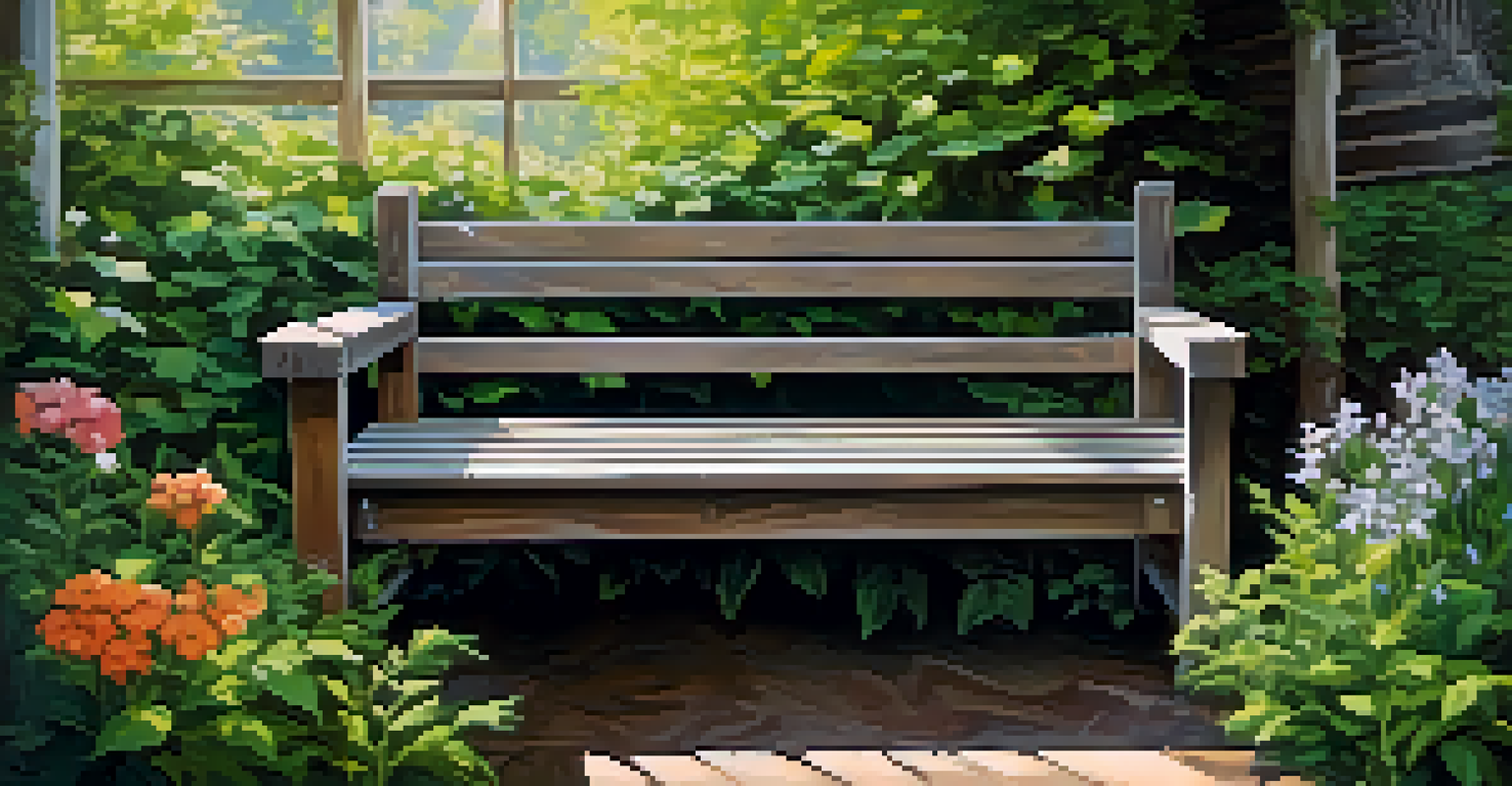Carving with Reclaimed Wood: A Sustainable Approach

Understanding Reclaimed Wood and Its Benefits
Reclaimed wood refers to lumber that has been salvaged from old buildings, furniture, or other structures. This practice not only gives a second life to wood that might otherwise be discarded but also helps in preserving forests by reducing the demand for new timber. Using reclaimed wood is a sustainable choice that supports eco-friendly initiatives.
The best time to plant a tree was twenty years ago. The second best time is now.
Beyond its environmental benefits, reclaimed wood often carries a rich history, adding unique character and story to your carvings. Each piece of wood has its own distinct patina, knots, and imperfections that make it truly one-of-a-kind. When you carve with reclaimed wood, you’re not just creating art; you’re celebrating its past.
Additionally, reclaimed wood can be more durable than new lumber, as it has already weathered the test of time. This strength not only enhances the longevity of your carved items but also means you’re investing in quality craftsmanship. Embracing reclaimed wood is both a practical and artistic choice.
The Creative Process: Tools and Techniques
Carving with reclaimed wood can be a rewarding experience, but it's essential to use the right tools. Basic carving tools include chisels, knives, and gouges, which allow you to shape the wood to your liking. Depending on the project's complexity, you might also consider power tools, but always approach them with caution.

Before you start carving, it’s important to prepare the wood. This may involve cleaning, sanding, and sometimes even treating the surface to prevent pests or decay. Preparing your wood properly not only ensures a smoother carving process but also enhances the final look of your artwork.
Benefits of Reclaimed Wood
Reclaimed wood is a sustainable choice that not only reduces waste but also adds unique character to your carvings.
As you begin to carve, remember that reclaimed wood can be unpredictable due to its previous life. Embrace the unique characteristics and imperfections; they can lead to beautiful, unexpected outcomes in your work. Each stroke of the tool can reveal unique patterns and textures that enhance your design.
Sustainability: Why It Matters
Sustainability is more than a buzzword; it's a crucial approach to living harmoniously with our planet. By using reclaimed wood, you actively participate in reducing waste and conserving natural resources. This small choice can have a significant impact on the environment.
Sustainability is no longer about doing less harm. It’s about doing more good.
Moreover, opting for reclaimed materials can encourage others to think about their consumption habits. When more people appreciate the beauty and utility of reclaimed wood, it creates a demand for sustainable practices within the woodworking community. Your carved pieces can inspire conversations about sustainability.
Incorporating sustainability into your crafting not only benefits the environment but also adds value to your work. More consumers are looking for eco-friendly products, and showcasing your commitment to sustainability can set your art apart in a crowded market.
Finding Quality Reclaimed Wood Sources
Finding high-quality reclaimed wood can be as rewarding as the carving itself. Various sources, including local lumber yards, salvage shops, and online marketplaces, offer reclaimed materials. Always check the wood's condition and history to ensure it's suitable for your projects.
Networking with other woodworkers can also lead to great reclaimed wood finds. Joining local woodworking groups or online forums can help you connect with others who share your passion. They may have tips on where to source wood or even have pieces available for trade or sale.
The Creative Process
Using the right tools and embracing the wood's imperfections can lead to beautiful and unexpected outcomes in your craftsmanship.
Additionally, consider visiting architectural salvage events, where you can find unique pieces of wood from historical buildings. These events are treasure troves of character-rich materials just waiting to be transformed into beautiful carvings. Plus, you can often learn about the history of the materials, adding even more depth to your work.
Design Ideas for Carving with Reclaimed Wood
When it comes to carving with reclaimed wood, the design possibilities are endless. From intricate sculptures to rustic furniture, reclaimed wood can be the foundation for numerous creative endeavors. Think about the stories behind your wood and let that inspire your designs.
You might consider simple decorative items, like coasters or wall hangings, which can be perfect for beginners. As you gain confidence, explore more complex projects such as furniture pieces or large sculptures. The beauty of reclaimed wood is that it can adapt to various styles and functions.
Remember to keep your audience in mind while designing; unique, handcrafted items have a strong appeal. Whether it's a gift for a loved one or a product to sell, your carved creations can resonate with those who value sustainability and artistry. Let your creativity flow and see where the wood takes you!
Caring for Your Reclaimed Wood Carvings
Once you've completed your carving, it’s essential to care for your reclaimed wood pieces to ensure their longevity. Start by applying a protective finish, such as oil or varnish, to seal the wood and enhance its natural beauty. This step not only improves aesthetics but also offers protection against moisture and wear.
Regular cleaning is also vital to maintaining your pieces. Use a soft cloth to dust off your carvings, and avoid harsh chemicals that could damage the wood. If your piece is exposed to heat or moisture, take extra care to keep it in a suitable environment to prevent warping.
Caring for Your Carvings
Proper maintenance of your reclaimed wood pieces ensures their longevity and emphasizes the importance of sustainable practices.
By taking these simple steps, you can ensure that your reclaimed wood carvings remain beautiful and functional for years to come. Caring for your art not only shows respect for your work but also emphasizes the importance of sustainable practices. Each piece tells a story, and with proper care, its story can continue for generations.
The Impact of Carving on the Environment
Engaging in woodworking, especially with reclaimed materials, can significantly impact the environment. By choosing reclaimed wood, you reduce the amount of waste that ends up in landfills, making a positive contribution to sustainability. This conscious choice aligns with a growing movement toward eco-friendly living.
Moreover, the act of creating can foster a deeper connection to our environment. As you carve and shape the wood, you develop an appreciation for the materials and the history they carry. This connection can inspire you to be more mindful about your consumption habits, both in woodworking and beyond.

Ultimately, the impact of your craftsmanship extends beyond the pieces you create. By sharing your journey and the importance of sustainability, you can inspire others to embrace similar practices. Together, we can carve a path toward a more sustainable future, one project at a time.